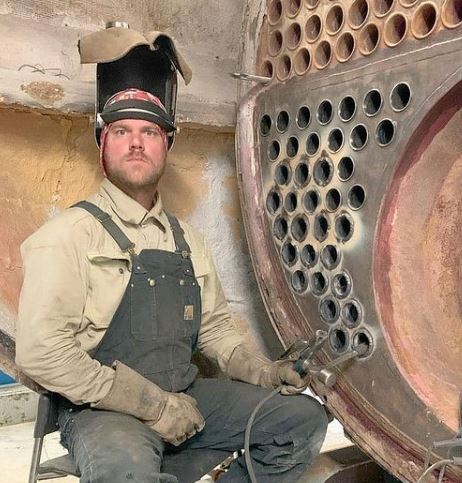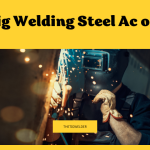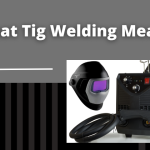Definition of MIG and TIG welding: MIG welding, also known as Gas Metal Arc Welding (GMAW), is a welding process that uses an electric arc to create heat and melt the filler material and base metal, which are then fused as the weld. MIG welding uses a continuous wire as the filler material, which is fed through a welding gun and melted by the electric arc. TIG welding, also known as Gas Tungsten Arc Welding (GTAW), is a welding process that uses a non-consumable tungsten electrode to create an electric arc, which then melts the filler material and base metal to form the weld.
Overview of the two welding techniques: Both MIG and TIG welding are popular and widely used welding techniques, and they have many similarities, such as the use of an electric arc to create heat and melt the filler material and base metal. However, there are also some key differences between the two techniques, including the type of filler material used, the level of precision and control available, and the materials and thicknesses that can be welded.

Comparison of MIG and TIG Welding
Speed: MIG welding is typically faster than TIG welding, as the continuous wire filler material allows for a more efficient and continuous welding process. In MIG welding, the welder does not need to stop and start the arc or add filler material manually, as the wire is constantly fed through the welding gun. In TIG welding, the welder must manually add the filler material as needed, which can slow down the welding process.
Quality of weld: TIG welding generally produces higher quality welds than MIG welding, as the welder has more control over the arc, the filler material, and the heat input. TIG welding allows the welder to adjust the arc length, the current, and the filler material to get the best results for the specific material and application. MIG welding, on the other hand, is more automated and may not provide the same level of control and precision.
Versatility: MIG welding can be used on a wider range of materials than TIG welding, as it can weld materials with a wider range of thicknesses and compositions. MIG welding is particularly effective for thicker materials, as the continuous wire filler material allows for a more efficient and continuous welding process. TIG welding is typically better suited for thin materials and high-precision applications, as it allows for more control over the arc and the filler material.
Ease of use: MIG welding is generally easier to learn and use than TIG welding, as it is a more automated process and requires less manual dexterity. MIG welding is often the first welding technique that new welders learn, as it is a good introduction to the basic principles of welding and allows for a more forgiving and user-friendly process. TIG welding requires more skill and precision, as the welder must manually add the filler material and control the arc and heat input.
Advantages of MIG Welding
Faster speed of welding: As mentioned above, MIG welding is typically faster than TIG welding, as the continuous wire filler material allows for a more efficient and continuous welding process. This can be particularly useful in high-volume or production welding applications, where speed and efficiency are important considerations.
Ability to weld a wider range of materials: MIG welding can be used on a wider range of materials than TIG welding, as it can weld materials with a wider range of thicknesses and compositions. MIG welding is particularly effective for thicker materials, as the continuous wire filler material allows for a more efficient and continuous welding process. MIG welding can be used on a variety of materials, including steel, aluminum, and stainless steel, and it is often used in industries such as construction, automotive, and manufacturing.
Ease of use for beginners: MIG welding is generally easier to learn and use than TIG welding, as it is a more automated process and requires less manual dexterity. MIG welding is often the first welding technique that new welders learn, as it is a good introduction to the basic principles of welding and allows for a more forgiving and user-friendly process. MIG welding is also generally more forgiving of mistakes, as the continuous wire filler material can help to compensate for any imperfections in the weld.
Advantages of TIG Welding
Ability to produce high-quality welds: TIG welding generally produces higher-quality welds than MIG welding, as the welder has more control over the arc, the filler material, and the heat input. TIG welding allows the welder to adjust the arc length, the current, and the filler material to get the best results for the specific material and application. This level of control and precision can be particularly useful in applications where a high-quality weld is critical, such as in the aerospace or medical industries.
More precise and controllable than MIG welding: TIG welding is generally more precise and controllable than MIG welding, as the welder has more control over the arc, the filler material, and the heat input. TIG welding allows the welder to adjust the arc length, the current, and the filler material to get the best results for the specific material and application. This level of control and precision can be particularly useful in applications where a high level of accuracy is required, such as in the fabrication of precision parts or thin materials.
Can be used in thin materials: TIG welding is typically better suited for thin materials and high-precision applications, as it allows for more control over the arc and the filler material. TIG welding is often used in applications where the materials being welded are thin, such as in the fabrication of sheet metal parts or the repair of thin-walled structures.
MIG and TIG welding both have their advantages and disadvantages, and the best choice will depend on the specific application and the experience and skill level of the welder. MIG welding is generally faster and easier to use, and it is well-suited for thicker materials and high-volume applications. TIG welding, on the other hand, is generally more precise and controllable, and it is well-suited for thin materials and high-precision applications. Both techniques can produce high-quality welds when used correctly, and the choice between the two will depend on the specific requirements of the application and the abilities of the welder.

It’s been years since I got into welding as a side hustle. It’s been so long since Doing All kinds of welds for business and pleasure as this is my hobby. Being in this field I have learned from hands-on-experience also came to know what gears work and what doesn’t. The Tig Welder is my own platform where I use to share my experience.






Leave a Reply